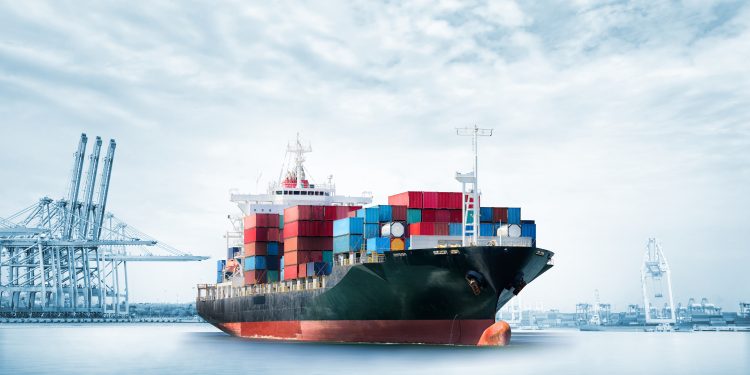Britannia P&I Club published guidance for containerships to deal with parametric roll motions. In the guidance, Britannia explains how can ships identify parametric roll and what is triggering it.
Unfavourable combinations of rolling period, vessel speed, heading and wave conditions, can trigger sudden and extremely rapid increases in roll motions, which might leads to excess loading on container securing devices and in the worst cases, container stack collapses and container losses.
How to identify synchronous and parametric roll motions
- Synchronous rolling occurs in beam seas, when the roll period of the vessel matches the wave period. The vessel heels over with ever larger successive roll angles.
- Parametric rolling occurs due to changes in vessel stability as the vessel moves in waves. It is most common in heavy head seas but can occur also in following seas. It is a sudden phenomenon with large and rapidly increasing roll angles experienced over a short period of time.
Key triggering conditions to watch for
- Vessel rolling period (time it takes for the vessel to roll from port, to starboard, then back to port) approximately equal to the wave encounter period, or twice the wave encounter period.
- A low metacentric height (GM) leading to long rolling period.
- Near following sea conditions or head seas.
The wave encounter period can be measured with a stopwatch as the time between two wave crests. It is close to the vessel pitching period (time it takes for the vessel to pitch bow down, stern down and back to bow down).
What to do when it happens
To reduce the risk of large roll motions, IMO guidance recommends changing the vessel heading or adjusting the speed, whilst avoiding abrupt steering. The guidance in the following pages shows, for a range of generic containership vessel sizes and typical loading conditions, the expected safe zone where dangerous situations are less likely to occur.
Masters should use this guidance with particular observation of the specific features of their vessel and its behaviour in heavy weather. All deck officers should familiarise themselves with the applicable chart for their size of vessel and the loading condition at the beginning of a voyage, so they are familiar with actions to be taken to reduce the rolling, as parametric rolling in particular, can develop quickly necessitating prompt remedial actions.
A series of incidents with exceptional container losses occurred during the winter season 2020-2021. The TopTier project was put in place by industry to find ways to avoid similar incidents in the future, and initial results show that parametric rolling in following seas was especially hazardous.






























































